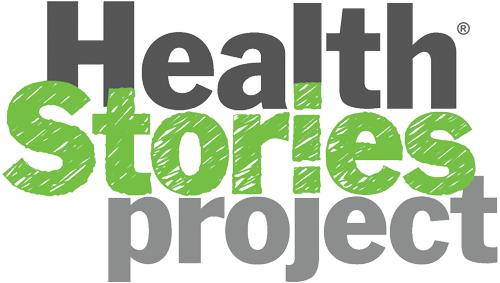When Smiley the Blind Therapy Dog recently passed away at 15 years old after a long fight with cancer, thousands of people posted messages of grief across social media. The passing of Smiley was quite tough for people to take in, but knowing the positive impact he had for many of the residents is what he will be remembered for. Smiley, a fluffy golden retriever who was rescued from a puppy mill, was born without eyes due to a condition associated with dwarfism, which also gave him oversized teeth – and his signature grin. He spent more than a decade working as a therapy dog in his hometown of Toronto, bringing joy and comfort to children and the elderly. He was also a social media sensation with more than 200,000 followers on Instagram.
Smiley may have been a breakout star, but therapy animals are more popular than ever. Studies have shown time and again that having pets or being around animals can offer serious health benefits, from improved mood to lower blood pressure. Therapy animals – which are different from the service animals extensively trained to assist the disabled – range from live-in pets to certified volunteer animals that visit schools, hospitals, and nursing homes. The majority of therapy animals are dogs, but just about any domesticated animal can play the role, including cats, guinea pigs, rabbits, birds, rats, miniature pigs, llamas, horses and even the occasional snake. They help those with physical ailments by distracting them from their discomfort, and help those suffering from mental health problems like anxiety. We are lucky to have animals to help us through tough times, but what happens when animals themselves suffer from the same?
The use of animals to boost wellbeing is nothing new. The ancient Greeks believed horses had therapeutic value, improving the health of people with depression or disabilities. In 19th-century mental institutions in England, pets were used to help calm residents. And iconic civil war nurse Florence Nightingale championed small pets as ideal companions for the chronically ill.
Scientists believe that most people have a positive reaction to pets because of oxytocin, a hormone that eases stress and stimulates bonding and relaxation. When humans interact with dogs, oxytocin levels spike in both species. “Mutual gazing” decreases anxiety and arousal levels and slows the heart rate. Holding and petting animals produces an automatic relaxation response and can lessen physical pain and even improve immunity. The mental health benefits are equally impressive. Pets, whether live-in or visiting, lessen depression, lower feelings of isolation, provide comfort, and aid children in overcoming speech or emotional disorders.
Therapy animals can be life changers. One famous example is Iris Grace Halmshaw and her cat Thula. When Iris Grace was four, she was extremely withdrawn and diagnosed with severe autism. Then her devastated parents brought home a Maine Coon cat. This breed is known for being friendly and fascinated with water.
Thula was happy to hop in the tub with Iris Grace, who previously had an aversion to the feeling of water on her skin. The big, long-haired kitty also helped with another huge breakthrough. Doctors told Iris Grace’s parents that she might never speak, but once Thula arrived, the child soon started talking to her purrfect pet bestie. Incredibly, Iris Grace, now 7, has become internationally renowned for her astonishing artwork, which has been purchased by the likes of Angelina Jolie. Her story has been told in a book and a short documentary. And naturally, Thula accompanies Iris Grace to her gallery openings.
Therapy animals sometimes make headway where traditional talk therapy has fallen short. For many veterans returning from combat, equine therapy has become a common approach to dealing with post-traumatic stress disorder. People with PTSD often suffer from nightmares, anxiety, depression, and anger. Talk therapy helps, but horses seem to offer something special: an unshakeable bond.
In therapeutic programs, participants groom their horses, tack them up, and ride them (programs include special equipment to accommodate disabilities), which boosts confidence. Like people with PTSD who are hyper-vigilant, horses, which are prey animals, rely on heightened senses for survival, which makes them relatable. They react negatively to negative human emotions and positively to positive ones, providing a sort of mirror. In one study, 100 percent of veteran participants in equine therapy showed dramatically reduced stress levels. Horses can also help kids with emotional and behavioral issues, as well as those suffering from grief.
Canines have been comforting humans since they evolved to become our close companions, so it’s no wonder they are the most popular choice for therapeutic uses. Many hospitals have therapy dog programs, and patients immediately perk up when a furry friend pays a visit, especially sick kids. Well-trained therapy dogs are frequent visitors to nursing homes and hospices, and they also provide comfort in unexpected places, like universities during finals week or to help children testify in courtrooms, both highly stressful situations. Sometimes all it takes is a hug or a high five.
Therapy dogs have also become an important resource in the wake of tragedies, from natural disasters to mass shootings. Following October’s traumatic Las Vegas massacre, Lutheran Church Charities quickly mobilized to send 19 golden retrievers from across the country to Nevada to bring comfort to those affected, from the gravely injured to the grieving families. Photos of the eager-to-help therapy dogs went viral, perhaps providing some relief to a shaken nation, as well.
Just looking at animals can make us feel better, which explains the endless supply of photos and videos on every form of social media. Of course, nothing is as good as the real deal. And for the many amazing benefits therapy animals give to humans, all that they ask back from us is love, respect, and a gentle touch.

